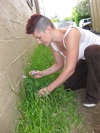 Looking back to fix the present: How going wild can aid sustainability -- Starting Sunday, May 24, I'll spend a week eating wild food that I forage from sidewalks, parks, wilderness areas and yards in the city of Portland, Oregon. There will be no dumpster diving or mooching off gardens; I will be eating wild edibles only.
I will be blogging about my experience here at CultureChange.org, talking about what I eat, how I prepare it and how I feel. As a city girl accustomed to the comforts of restaurants and supermarket food, I am excited to experience a new kind of luxury: interacting with the Earth the way I was meant to.
Looking back to fix the present: How going wild can aid sustainability -- Starting Sunday, May 24, I'll spend a week eating wild food that I forage from sidewalks, parks, wilderness areas and yards in the city of Portland, Oregon. There will be no dumpster diving or mooching off gardens; I will be eating wild edibles only.
I will be blogging about my experience here at CultureChange.org, talking about what I eat, how I prepare it and how I feel. As a city girl accustomed to the comforts of restaurants and supermarket food, I am excited to experience a new kind of luxury: interacting with the Earth the way I was meant to.
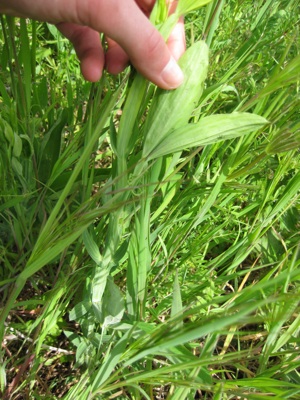
Most of what I know comes from spending time with knowledgeable friends who are herbalists, survivalists, ethnobotanists and primitive skills enthusiasts. Some of them will be joining me this week and introducing me to foods I've never tried before. What we are doing is a bit like reinventing the wheel. Because we lost most of our ancestral knowledge when our forefathers destroyed indigenous cultures, modern-day foragers are tasked with salvaging what scraps of information we have left. It is essential that we work together as a community to assemble the pieces.
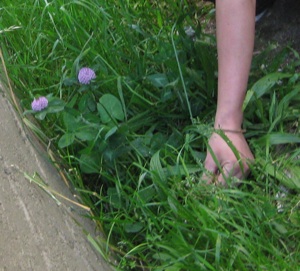
Over the past few years there has been a sudden resurgence of the old ways in America. It may be a meaningful synchronicity that this is happening right now, that ordinary people who went to college and got desk jobs in gray cubicles, like me, are finding ourselves intensely drawn to rewilding. Some, interested in traditional healing, are becoming herbalists and shamans; others want to know about hunting and hide-tanning. All of it has tremendous value for those interested in building a better, more sustainable society.
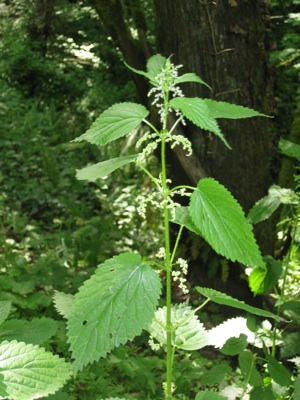
This wild food challenge feels adventurous because ancestral lifeways are so unfamiliar, but it's nothing out of the ordinary in the context of history. The Portland area has been continuously inhabited for the past 10,000 years by hunters and gatherers. In fact, the region has only had agriculture for the last 150 years at most, according to Portland State University anthropologist Cameron McPherson Smith.
Before Europeans settled here in the 1850s, the native diet was made up primarily of salmon, sturgeon, wapato and camas roots, deer and elk, and salalberries, blackberries and huckleberries. It was supplemented with oil from the euchalon fish, which was used like butter, as well as greens such as ferns, western dock, and lupine. The available food alternated depending on the season -- for instance, nuts in the autumn, greens in the spring and fruits and berries in the summer.
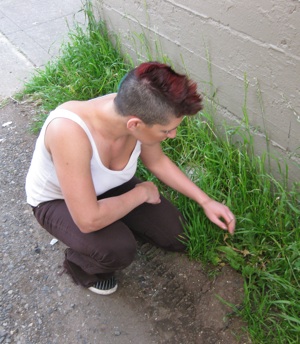
Many of the plants I will be eating can be found across North America. If you live in the Pacific Northwest, check out Food Plants of Coastal First Peoples by Nancy J. Turner and Edible and Medicinal Plants of the West by Gregory L. Tilford. A fantastic guide to wild mushrooms of the west is All That The Rain Promises and More... by David Arora. The Forager's Harvest by Sam Thayer offers a handy calendar that tells you when each plant is available and edible. A classic book that's helpful anywhere in North America is the Peterson Field Guide to Edible Wild Plants.
Since agriculture and industrialization polluted most of the land and water on the planet over the past 200 years, contemporary foragers need to think about how we can best minimize our exposure to poisons. The further you are from civilization, the less chance of contamination you have. It's a good sign if you see lichens growing on the trees, since they are usually too sensitive to grow in polluted air.
John Kallas, a Portland, Oregon-based botanist and foraging expert, offers the following safety advice: "Don't gather within 4 feet of an old house because of lead paint. Don't gather within 30 feet of a highway -- and even then, preferably gather uphill -- because of nickel and cadmium from the batteries, petroleum chemicals wearing off tires and washing off the side of the road, coolant, and gasoline. And never, ever, ever gather near railroad tracks. They've been putting pesticides and herbicides in those areas for the last 100 years."
So few people forage these days that questions of impact are usually negligible, but there are some guidelines for being ecologically responsible. Traditionally, herbalists advise removing no more than 1 out of every 20 plants in a stand. This is of course a general rule, and it has exceptions. It does not apply to invasive species or weeds, which many people would be excited to eradicate. And it does not apply to mushrooms, berries, seeds or nuts, or any other situation where you can harvest food from a plant without harming it. It is also a good idea to familiarize yourself with the laws in your area, because they're usually set with the intention of preventing over-harvesting and protecting endangered species.
The more you learn about ancestral ways, the more powerful you will become. You will acquire the ability to recognize hidden abundance, to see things that were previously invisible to you. For instance, where I once saw a nondescript green mass lining the roadsides, I now recognize cough medicine, fiber to weave mats with, and even emory boards. Eating wild shifts your understanding of reality. You are now and have always been free.
Further Resources
If you are looking for an expert teacher and you enjoy hands-on learning, you may enjoy a foraging walk with John Kallas of Wild Food Adventures in Portland, OR, or Steve Brill on the east coast.
If you're looking for an immersive education that exposes you to a broad range of primitive skills that extend beyond foraging, the most respected schools are Boulder Outdoor Survival School in Utah, Teaching Drum in Wisconsin, Tom Brown's Tracker School in New Jersey and Jon Young's Wilderness Awareness School in Washington. Primitive skills and herb schools are proliferating faster than ever, and most offer weekend workshops and part-time classes. The web site Hollowtop lists programs all across the world, as well as a number of primitive skills gatherings across the country, which offer attendees a chance to network and share skills for a few days at a time. A few gatherings to consider are Rabbitstick Rendezvous in Idaho, Winter Count in Arizona, and Echoes in Time in Oregon.
"Wild Girl" Becky Lerner is a journalist who writes about foraging and primitive skills at www.FirstWays.com.
Read her article "Week of Wild Food - Day One"

